
views
Trying Home Remedies
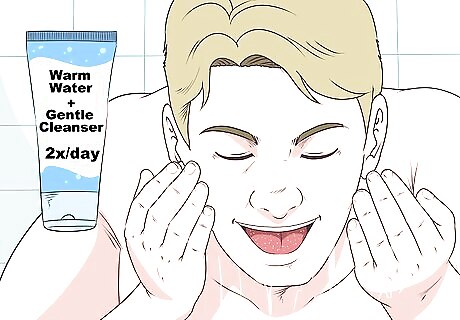
Clean your face daily for clear skin. Start getting rid of milia by getting into a good skincare routine. Make sure to wash your face with warm water twice a day. You should use a light, gentle cleanser. Try choosing one that specifies “gentle” or “sensitive skin.” Gently rub the cleanser into your skin for 20-30 seconds. Rinse thoroughly, and pat dry with a clean, dry towel.
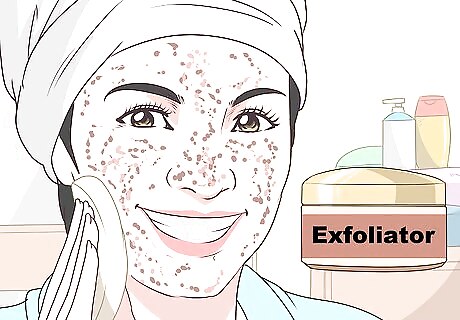
Use an exfoliator to help clear your skin. Teens and adults should treat milia with an exfoliating treatment. You could either go for an exfoliating moisturizer or a targeted exfoliating product. An exfoliating moisturizer is a good idea if your milia are widespread and accompanied by dry skin. The moisturizer will reduce the build-up of dead skin cells below your skin and the exfoliating aspect will allow your skin to release the dead cells that have already accumulated. Look for a moisturizer that contains vitamin A. It should also be free of any heavy oils. A targeted exfoliating treatment is best if you have a few milia that you want to get rid of, but otherwise have no skin problems. Choose a targeted treatment containing salicylic acid. The treatment should be applied directly to the milia once daily until they disappear. Check the label to follow specific instructions for that product.
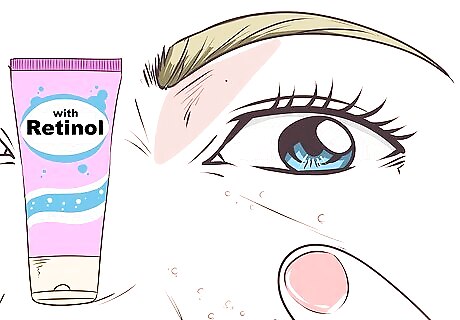
Add products with Retinol to your routine for brighter looking skin. Retinol is commonly used to fight acne and signs of aging. It has exfoliating properties that keep your skin soft and clear. For best results, use a targeted Retinol lotion and apply it directly to the area of your skin affected by the milia. Wait roughly 30 minutes after you wash your face before using the Retinol. Apply a pea-sized drop of retinol to the milia-covered area of your face every other night. Do not apply Retinol to the upper eyelid since it can cause irritation and damage if it gets into your eyes.

Try an at-home chemical peel. Peels are one of the most effective ways to get rid of milia because they are basically a deep chemical exfoliant for your skin. If you can’t afford to see a dermatologist, don’t worry. There are lots of at-home chemical peels that work great and are easy to use. Look for ingredients such as lactic and glycolic acid. Follow the instructions on the package. Directions will vary depending on which peel you choose.
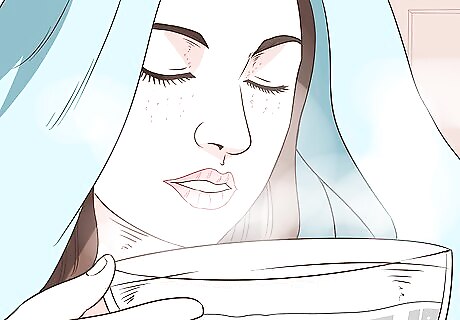
Use steam to open your pores. Opening and cleaning your pores is a great way to have clearer skin. To steam your pores, fill a large bowl with almost boiling water. Carefully lean over the bowl with your face near the water. Drape a towel over your head to keep the steam in, and stay like that for 5-10 minutes. Alternatively, you could run a hot shower with your bathroom door closed and the fan off. The room should get pretty steamy. Sit in the steam for 5-10 minutes.
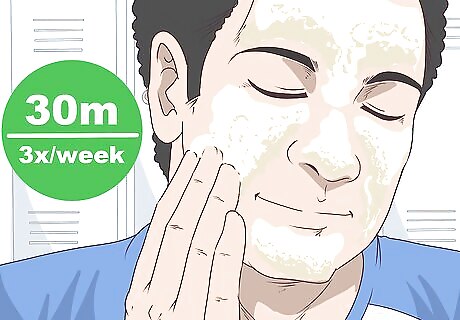
Make an egg mask 3 times a week. Eggs contain retinol, so they can help clear up your skin. To make an easy mask, combine 1 egg white, ½ tsp almond oil, 1 tbsp plain yogurt, 1 tbsp raw honey. Mix into a paste and apply to areas with milia. Leave the mask on for 30 minutes, then rinse with warm water and pat dry. Use this mask 3 times a week to see the best results.
Seeking Professional Help

See a dermatologist if home remedies don't work for you. If you find that home remedies aren’t helping get rid of the milia, make an appointment to see a dermatologist. Try jotting down some notes before your appointment so that you can give them specific information. Think about how long you’ve dealt with milia, and how frequently it appears. Ask family or friends for a recommendation to a dermatologist they trust. You can also look at online reviews to find one with a good reputation. Remember that milia is really common, and not a bad thing to have. You only need to take steps to get rid of it if it is bothering you.
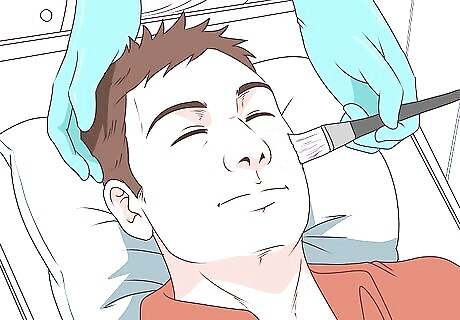
Schedule a professional chemical peel. A dermatologist will be able to apply a stronger chemical peel than you can at home. Talk to your dermatologist about your expectations and they can decide whether you need a light peel or a more aggressive peel. The peel will not hurt. After the peel, your skin might be red and feel irritated for a few days. Follow the dermatologist’s instructions on how to care for your skin after a peel.
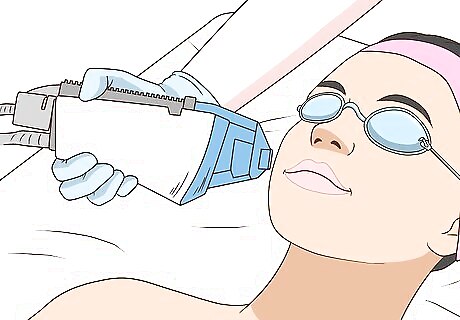
Get professional extractions or laser ablations for a deep cleanse. During extractions, a professional will use either a special tool or their hands to unclog your skin. Extractions are usually not painful, but you might feel a little pressure on stubborn spots. You can schedule a facial with extractions with either a dermatologist or aesthetician. Laser ablation accomplishes the same goals as extractions but does so using a laser beam. The laser is put on a low setting and heats up the material clogging your skin to a point where it evaporates or sublimates. Follow all instructions after an extraction. You might need to lay off products with Retinol for a day or 2, or go makeup-free for the rest of the day. If you don't want to get extractions, you don't have to! Milia is a cosmetic concern, and won't hurt you if it doesn't go away.
Taking Supplements Approved by Your Doctor
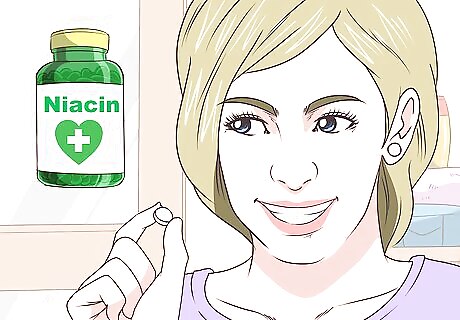
Try niacin supplements. Niacin, or vitamin B3, is an important nutrient that is thought to help maintain multiple systems in your body. Among its benefits, many believe that niacin helps maintain healthy skin and is capable of treating milia. Talk to your doctor before taking any supplements. Note that there is no scientific evidence to support the claim that niacin can get rid of milia faster. If you do not already take niacin supplements, begin by taking a small dose of 100 mg daily. Do not exceed 1500 mg of niacin daily since large doses have the potential to cause liver damage. Only use pure niacin supplements, since these are less likely to contain harmful toxins or additives.
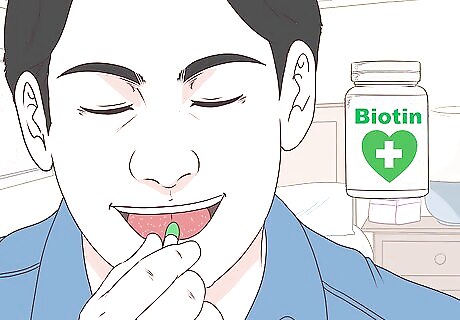
Consider biotin supplements. This co-enzyme and B vitamin is also known as vitamin H. Most people take in enough biotin through diet alone, but if you suspect that you may need more, you can also take it in supplement form. Ask your doctor before trying new supplements. Biotin is thought to have multiple benefits. It supports adequate skin health, which means that it may help your skin to release the milia quicker. Note that there are no scientific studies capable of backing this claim, however. Adults should only take 25 to 35 mcg of biotin a day.

Increase your intake of CoQ10. Increasing the amount of CoQ10 your body gets can be done naturally and without the use of supplements. Your body produces CoQ10 when you exercise, and the vitamin can also be found in foods like meat and fish.This vitamin is thought to help maintain many of your body's systems and functions and may help improve the health of your skin. Note that there is no scientific evidence to support a direct link between CoQ10 and milia. However, it is generally considered safe. Talk to your doctor before taking any supplements. CoQ10 acts as an emulsifier, so it removes oils from the body. By allowing your body to flush these oils out more easily, it may be able to help the pores blocked with milia to flush out any dead skin cells, as well.
Preventing Milia

Reduce your sun exposure. Milia can worsen with sun damage. This is especially true if you are suffering from secondary milia, which is caused by blistering. A sunburn can result in the spread or prolonged existence of milia, so cutting down on sun exposure will let you get rid of milia faster. Stay out of direct sunlight as much as possible. When spending time outside, wear a hat to shade your face. Apply a gentle oil-free sunblock specially formulated for facial care. A heavy, oily sunblock will only clog your pores more, making it harder to exfoliating the trapped dead cells causing the milia. A light sunblock can offer protection from the sun without clogging your pores, though. Look for a light one with a minimum SPF of 15 or above.
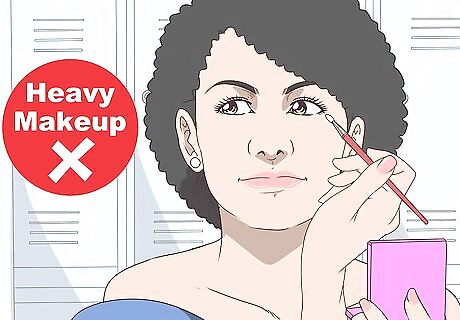
Avoid heavy cosmetics or creams. You may be tempted to conceal your milia with makeup, but doing so will only prolong their stay. It will also welcome more dirt onto your face, making your milia harder to get rid of. Cosmetics and heavy creams stay on your skin, blocking your pores. In order to get rid of your milia, you need to be able to exfoliate away dead skin cells. Doing so will be much more difficult if your pores are blocked by makeup, though.
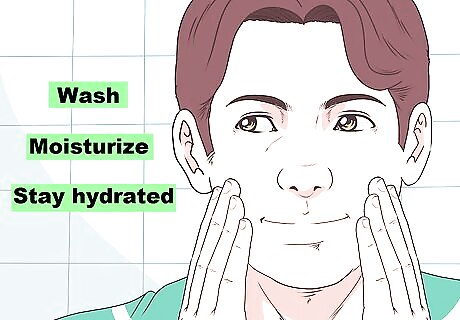
Make good skin care a part of your daily routine. You might not be able to completely prevent milia, but you can take steps to make flare-ups less frequent. Make it a point to take care of your skin each day. Wash your face, moisturize, and stay hydrated. You might also consider getting regular facials if your budget allows.




















Comments
0 comment